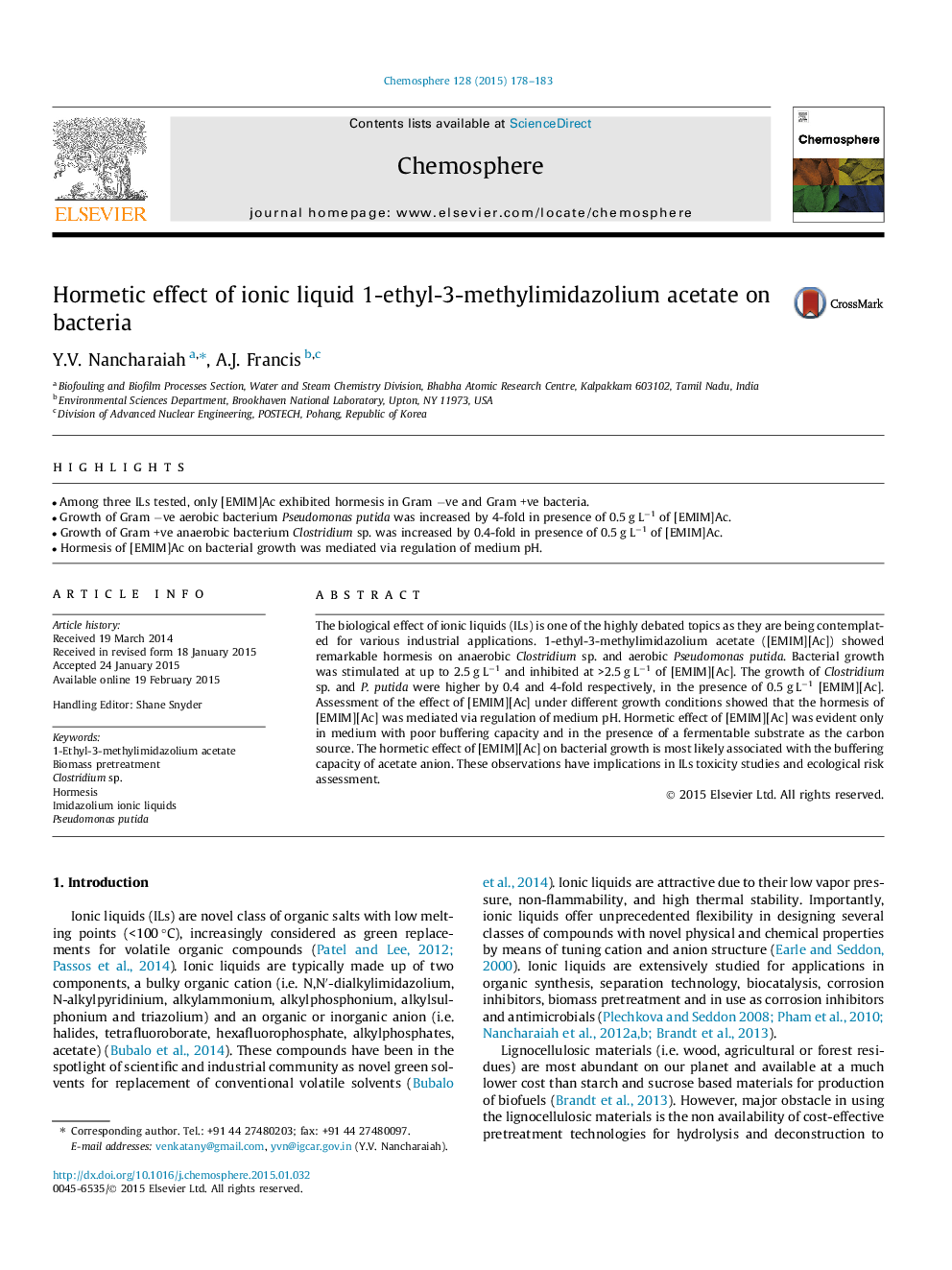| Article ID | Journal | Published Year | Pages | File Type |
|---|---|---|---|---|
| 4408487 | Chemosphere | 2015 | 6 Pages |
•Among three ILs tested, only [EMIM]Ac exhibited hormesis in Gram −ve and Gram +ve bacteria.•Growth of Gram −ve aerobic bacterium Pseudomonas putida was increased by 4-fold in presence of 0.5 g L−1 of [EMIM]Ac.•Growth of Gram +ve anaerobic bacterium Clostridium sp. was increased by 0.4-fold in presence of 0.5 g L−1 of [EMIM]Ac.•Hormesis of [EMIM]Ac on bacterial growth was mediated via regulation of medium pH.
The biological effect of ionic liquids (ILs) is one of the highly debated topics as they are being contemplated for various industrial applications. 1-ethyl-3-methylimidazolium acetate ([EMIM][Ac]) showed remarkable hormesis on anaerobic Clostridium sp. and aerobic Pseudomonas putida. Bacterial growth was stimulated at up to 2.5 g L−1 and inhibited at >2.5 g L−1 of [EMIM][Ac]. The growth of Clostridium sp. and P. putida were higher by 0.4 and 4-fold respectively, in the presence of 0.5 g L−1 [EMIM][Ac]. Assessment of the effect of [EMIM][Ac] under different growth conditions showed that the hormesis of [EMIM][Ac] was mediated via regulation of medium pH. Hormetic effect of [EMIM][Ac] was evident only in medium with poor buffering capacity and in the presence of a fermentable substrate as the carbon source. The hormetic effect of [EMIM][Ac] on bacterial growth is most likely associated with the buffering capacity of acetate anion. These observations have implications in ILs toxicity studies and ecological risk assessment.
